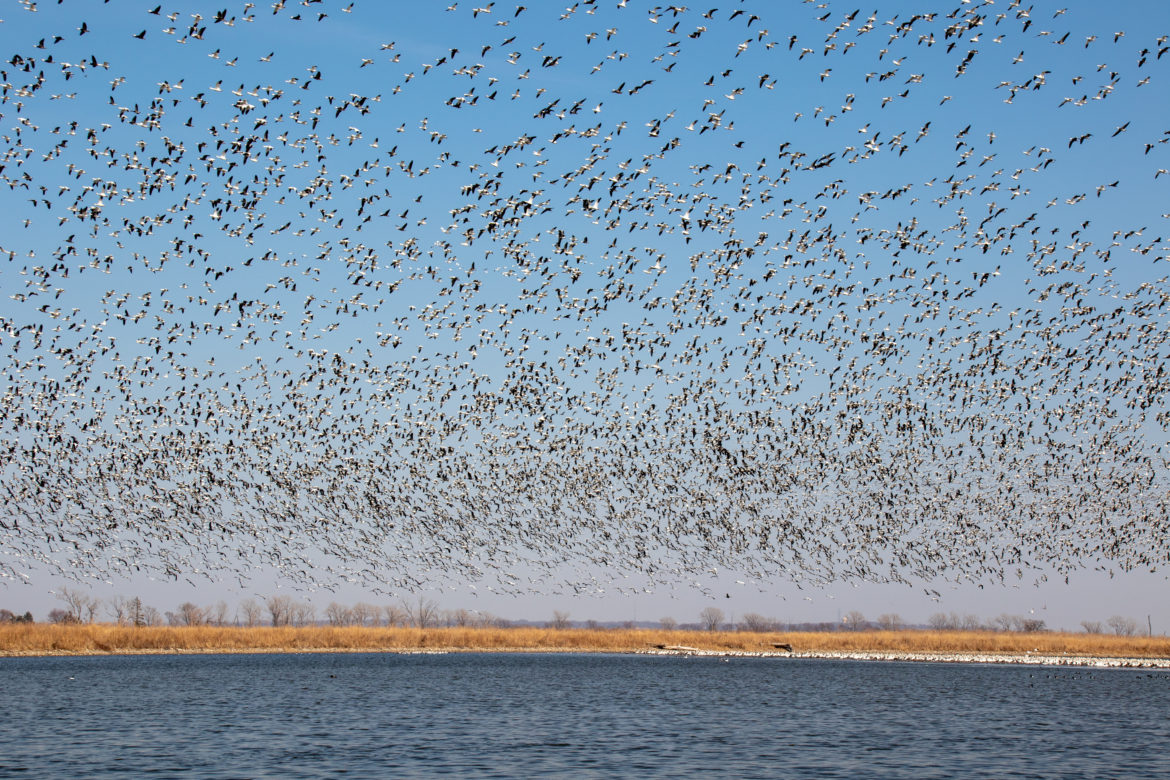The Missouri River plain is a haven for bird lovers. Especially during spring and fall, various bird migrations stopover, along the Central Flyway of the U.S. I enjoyed a beautiful day in early March observing the snow geese migration for a DeSoto Wildlife Refuge birdwatching adventure.
The Central Flyway is a route for bird migrations through the Great Plains in U.S. and Canada, between Gulf of Mexico and Canada. The route significantly narrows along the Platte and Missouri River valleys of central and eastern Nebraska. Because the Missouri river is the boundary between Iowa and Nebraska, it also includes western Iowa. This narrowing congregates the high number of birds along these good resources for water and food. Therefore, it’s a birdwatcher’s dream, especially the snow geese in March.
DeSoto Wildlife Refuge Birdwatching
Located along the banks of Missouri River, this refuge is in both the U.S. states of Iowa and Nebraska. The refuge was created in 1958 spreading over 8,362 acres (3,384 ha). It’s the home habitat for numerous other birds, such as, bald eagles, great blue herons, egrets, pelicans, cardinals and turkeys. In addition, numerous mammals inhabit the area, like white-tailed deer, coyotes, raccoons, pheasants, beavers, muskrats and squirrels.
I enjoyed the snow geese migration near the main viewing platform of the DeSoto oxbow lake. During the spring about 600,000 snow geese migrate, making a stopover at Desoto Wildlife Refuge. It was so energizing to observe these in sync flocks encompassing thousands of white birds exploding into flights above the water.
Related: Guide to the Great Sandhill Migration near Kearney, Nebraska
Migratory birds are mostly seen from March-April and September-December.
Snow Geese spend the winters in Mexico and southern U.S. This goose species has either a white “snow” (with black wingtips) or dark “blue” plumage. They breed north of the timberline in Canada, Alaska, Siberia and Greenland.
In addition, other waterfowls (ducks and geese) that populate the refuge include the American widgeon, bufflehead, Canadian goose, common goldeneye, northern shoveler, common merganser, northern pintail and blue-winged teal. Plus, numerous water birds inhabit the area, such as, white pelican, pied-billed grebe, great egret, greater yellowlegs, double-crested cormorant, spotted sandpiper and American coot.
The refuge is also a recreational area to enjoy fishing, biking and hiking. There are numerous nature trails throughout the park, for example, the DeSoto Wildlife Refuge Trail is a moderate 1.5-mile path. Also, there’s a visitor’s center to learn more about what to see and do at this refuge.
Overall…
The DeSoto Wildlife Refuge is a wonderful place to connect with nature and wildlife. Especially, whether you’re a bird lover, midwestern resident or just passing through, stop at the refuge for a birdwatching dream.



